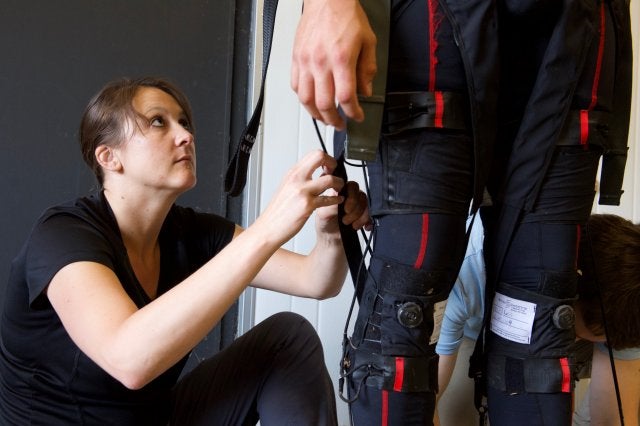The US Army is currently testing a new full body orthopedic “exosuit” designed to reduce soldier fatigue and injury, according to a press release made by the Army Research Laboratory (ARL) last week.
Although similar in concept, the new suit is neither an exoskeleton nor is it a powered armor. Most obviously, it has no armor plates nor is it powered, unlike powered armor, but also unlike an unpowered exoskeleton it does not have any rigid structure elements designed to remove the load from the user’s legs. Instead, the suit uses a series of pulleys and cables to act as a sort of “soft exoskeleton”, hence the somewhat redundant name “exosuit”.
According to the article, the new suit could offer benefits beyond just physical function and reduced injury; the team is reportedly also looking at potential cognitive benefits. Said ARL researcher Dr. Angela Boynton:
We’ve been primarily focusing on the physical benefits of these types of suits, but we’re also interested in the cognitive benefits… We’re hoping that by reducing the physical burden, that they also have the ability to put more energy into other types of tasks that involve cognitive or perceptual workload.
Despite the promise of the suit, its development raises questions of exactly how such unpowered soft suits would be used in the future. According to the press release:
Thanks to a new “suit” being developed by the DOD-funded Warrior Web program, future Soldiers will be able to march longer, carry heavier gear and improve mental sharpness.
Unfortunately, this kind of thinking is likely to come hand-in-hand with new technologies like this, meanwhile the soldier’s load is at a critical level and desperately needs to be reduced. Without the introduction of a radical new technology like true powered armor, the focus should be on improving conditioning, reducing injuries, and reducing the soldier’s load. While a full-body orthopedic suit like this one could be a major improvement in these areas, it would be a mistake to assume that it represents “carte blanche” to load the soldier down with even more gear.
According to Major Christopher Orlowski, perfection of the suit is expected to take at least another 5-10 years.
 Your Privacy Choices
Your Privacy Choices
